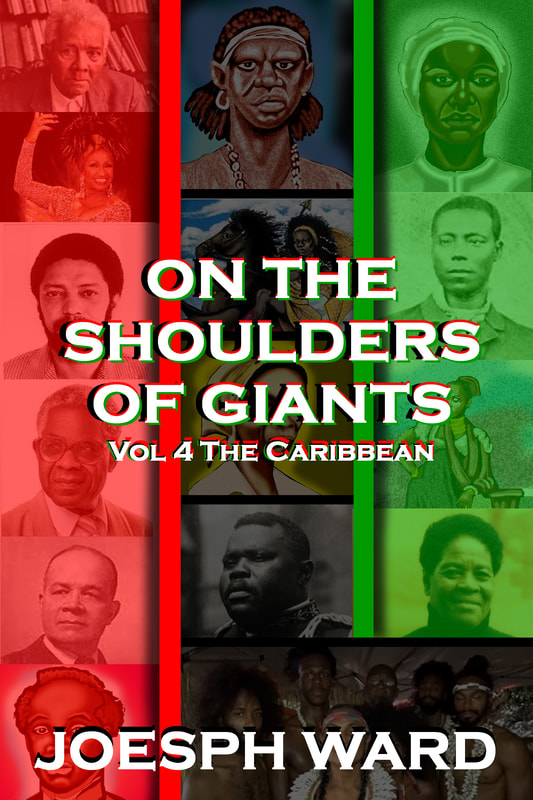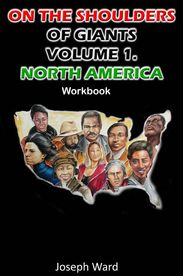|
July 4, 1844, is said to be the birth date of Edmonia Lewis, but that date is not confirmed, because Edmonia Lewis was known to embellish the details of her childhood, so there is no official account of her birth date or parts of her early childhood. We do know she was born in Rensselaer, Ney York, a city located across the Hudson River from Albany, New York. Her mother was named Catherine Lewis, who was a half Indigenous American of the Mississauga tribe and half African American from Canada. Catherine was also a very skilled craftswoman. She used those skills to provide for her family. There are several accounts of who Edmonia’s father was. Some believe he was a free black man named Samuel Lewis, others believe her father was the half African American and half Indigenous American author Robert Benjamin Lewis. When Edmonia reached the age of 9, unfortunately, both her mother and father passed away, so she and her brother Samuel moved to upstate New York to live with their maternal aunts. Lewis’ tribal name was Wildfire and her brother was Sunrise; they were called by these names when they lived with their aunts. Lewis and her aunts weaved baskets and made moccasin shoes and blouses to sell to the tourist at Niagara Falls. Lewis and Samuel lived with their aunts for 4 years until Samuel moved to San Francisco to find work. Samuel became wealthy through the California gold rush, so he was eager to pay for his sister's education. Lewis enrolled in the New York Central College’s pre-colligate program. New York Central College was a Baptist abolitionist school. She attended the school for three years before being dismissed from the school for what Lewis states as “being called wild”. When Lewis lived with her parents and aunts she lived a nomadic lifestyle until the age of 12, before being sent to the school. Despite the label of wild and being dismissed from the school, information was found to prove she was an excellent student. Lewis’ brother Samuel then sent his sister to the Oberlin Academy Preparatory School, she attended the school for three years before being admitted into Oberlin College. During her time at Oberlin, she lived with Reverend John Keep and his wife and added Mary to the beginning of her name, now being called Mary Edmonia Lewis. She received a well-rounded education, studying subjects from zoology to sculpting, and was known to use her unbound imagination to create art. Lewis was labeled as mischievous, being one of the few women of color at the school. She stated that she often faced racism. Lewis eventually left Oberlin college, some believe she was forced out, because of an incident with two white female students that tarnished her name. In January of 1862, two of Lewis’ housemates were preparing for an unsupervised sleigh ride to visit their boyfriends during a holiday break. In an attempt to help keep the girls warm Lewis served the girls spiced wine. During the sleigh ride, the girls became very sick and were believed to be poisoned, so that meant that Lewis was the suspect. Sources state that via medical testimony, Lewis added Spanish fly to the spiced wine for the girls. Charges were filed against Lewis and she would later have to attend trial. Lewis was not arrested and the local news outlets didn’t make the story a headline until the trial. A group of terrorists kidnapped and beat Lewis very badly one night as she was leaving Reverend Keep’s home, in retaliation to the girls being poisoned. Lewis’ initial court date for the alleged poisoning was delayed because of her injuries. The trial officially started on February 27, 1862, Lewis was represented by a mixed-race attorney named John Mercer Langston. Langston was a skilled lawyer and used his skills to obtain an insufficient evidence verdict for Lewis’ trial. Charges were dropped against Lewis but the public humiliation and tarnishing of her name had just begun. She was later accused of stealing art supplies and helping someone burglarize local properties, both charges were dropped against her. By this time it had become very difficult for Lewis to continue attending Oberlin, so she eventually left the school. In 1864, Lewis moved to Boston, Massachusetts to start her career as an artist, which was still funded by her brother. It is said she saw a statue of Benjamin Franklin and was inspired to become a sculptor. While in Boston, Lewis was able to connect with an abolitionist community which helped her meet other sculptors and artists. Reverend Keep wrote a letter of recommendation for Lewis to help her connect with the abolitionist community and to find a mentor. She would eventually become an apprentice to the sculptor Edward Augustus Brackett. Brackett provided Lewis with clay, tools, and know-how, to help her become a master sculptor. She became a very good sculptor in a short period of time, she was mastering sculpting with clay and plaster. She would often make sculptures and medallions of popular abolitionists. Lydia Maria Child was an abolitionist and interviewer. On several occasions, she would interview Lewis and display her work in newspapers. Lewis found early success with her sculptures. She participated in a local fair to help raise money for the all-black Massachusetts 54th Infantry, she made a bust of Sergeant William H. Carney, the first black man to be awarded the Congressional Medal of Honor, and Robert Gould Shaw, commander of the infantry. Lewis admired the infantry and Commander Shaw, especially for his work with the abolitionist. Commander Shaw honored Lewis by purchasing a bust. In 1865, Lewis would sell photos and copies of the bust to help fund a trip to Italy. Lewis stated that while living in Italy she could create her art free of racism and gender discrimination. She arrived in Italy in 1865, where she studied with sculptors Hiram Powers and Thomas Ball, two men that helped her improve greatly as a sculptor. She then moved to Rome where she joined a group of women who left the U.S. and Brittan to find a place to create art. She began sculpting with marble when she moved into the former home of the famous sculptor Antonio Canova. To help make a living she created and sold small busts and full-length sculptors. She completed her first masterpiece in 1867 Forever Free. A sculpture that depicted two African slaves becoming free. Lewis did return to the U.S. briefly to attend a dedication to the sculpture at Tremont Temple in Boston. Meanwhile, back in Italy, Lewis had become highly publicized by the media outlets. Her sculpture The Arrow Maker, a depiction of an Indigenous American father showing his daughter how to shoot an arrow, also gain much acclaim. Living and creating in Italy allowed Lewis to forge a great career for herself. She was able to make substantial amounts of money from her sculptures. She was also able to display and sell her art at numerous art exhibitions throughout the world. The Death of Cleopatra was created for the 1876 Centennial Exposition in Philadelphia, Pennsylvania. The sculpture was also highly acclaimed by many art enthusiasts and experts. The piece did come with some controversy over the symbol of the sculpture and the details added, some felt Lewis could not openly use the piece to express the plight of African American people. The sculpture was placed in storage for a while, then purchased and placed on the grave of a racehorse, before finally being placed in the Smithsonian in 1994. Lewis was hired to create the portrait of then-president Ulysses S. Grant. He was very happy with the final product. Lewis would also create a bust of then-senator Charles Sumner. Lewis created her sculptures in the neoclassicism style, a style of art that began in the mid-1800s in Italy and France. By the late1880s, neoclassicism was going out of style and Lewis’s popularity was declining but she continued to create busts, some that were later found and curated. Lewis died on September 17, 1907, in London, England. She is regarded as the first black woman to be internationally recognized as a master sculptor. She is the sculptor whose shoulders even the great sculptor Meta Vaux Warrick Fuller stands on. When she found her passion she did not allow anyone or anything to stop her. To make her dream come true she even moved to another country. To the great Mary Edmonia Lewis, we proudly stand on your shoulders. J.A. Ward Click here to support the OTSOG book series. References: https://en.wikipedia.org/wiki/Edmonia_Lewis https://www.theartstory.org/artist/lewis-edmonia/life-and-legacy/
0 Comments
“The Mother of the Mossi” is the title given to the woman I am presenting today. She was beautiful, strong, a warrior, a wife, a mother, and a matriarch. Naba Nedega was the ruler of the Dagomba Kingdom, which is modern-day Ghana, between the 11th and 15th centuries. A number of scholars believe he ruled in the 12th century. Naba Nedega had a daughter named Yennenga. Yennega was a tall and beautiful girl who loved to ride horses. This dynamic was odd in the Dagomba Kingdom because horse riding was reserved for the men. In addition to riding horses, she mastered the javelin, spear, and bow and arrow, and used those skills to become a master hunter. Being tall, smart, slender, agile, and a skilled hunter, made her father recruit her for his army. Within her father’s army, Yennenga developed the reputation of being an excellent warrior who other armies feared. Her athleticism and tact allowed her to become the leader of her own regiment. She was known for leading her regiment into battle and coming out victorious. As time passed and Yennenga grew older, her father wanted her to forgo marriage and remain in his army. Sources say that Yennenga did enjoy being in her father’s army, but she also longed for love and a family. Because of uncertain circumstances, Yennenga left her home and ventured into the forest of what is present-day Burkina Faso. There are many stories telling why Yennenga left her home, one story says she asked her father if she could become a wife and start a family, her father refused, she was saddened by his answer and fled her home. Another story says, she was walking in her village one day, saw a mother feeding her child, and realized she wanted to be more than a part of her father’s army. While lost in the forest of Bitou Yennenga came upon a young elephant hunter named Riale from Mali. Riale and Yennenga became acquainted with each other and eventually fell in love. The two would produce a son named Ouedraogo. When Ouedraogo was a young boy, Yennenga sent Ouedraogo to Dagomba to meet his grandfather Naba Nedega. When Naba Nedega meets Ouedraogo he was immediately overjoyed because he searched for his daughter for years and was happy she was alive. Naba Nedega arranged a feist inviting Yennenga, Riale, and Ouedraogo to attend. Once and for all, Naba Nedega’s family was reunited. Ouedraogo would learn to become a ruler and warrior from his grandfather. Ouedraogo was said to be as skilled as his mother in riding a horse, using the spear, javelin, and bow and arrow. When Ouedraogo became of age, he moved to Bitou and eventually established the Mossi Kingdom. Now you know why Yennenga is the “Mother of the Mossi” and why she is revered by the Mossi. To Yennega, we proudly stand on your shoulders. J.A. Ward Click here to support the OTSOG book series. References: https://face2faceafrica.com/article/yennenga-the-dagomba-warrior-princess-whose-son-founded-the-mossi-kingdom-of-west-africa https://www.funtimesmagazine.com/2021/08/04/364589/burkina-faso-independence-the-story-of-princess-yennega-a-mamprusi-from-northern-ghana-who-birthed-the-mossi-tribe-of-burkina-faso https://en.wikipedia.org/wiki/Yennenga The marshlands of Southern Iraq are the setting for today’s story. The Abbasid Caliphate were rulers of the Islamic world who came to power in 750 CE, after defeating the Umayyad Caliphate. At the time the city of Kufa, Iraq, was the capital city of the Caliphate, but their empire stretched from Libya to Iran. The marshlands were abandoned by their original inhabitants because the land became inhabitable due to excessive flooding which caused layers of natron to form on the land. Wealthy merchants and maganents were interested in buying the land to have it restored for agricultural purposes, and they would use servant labor to restore the lands. As the merchants and maganents proceeded with their plans, they either purchased or stole people from the east coast of Africa and the islands along the east coast of Africa. Over time the slave labor of the Abbasid consisted of people they conquered, but the Zanj specifically were classified as people from the East coast of Africa. The Abbasid slaves were deployed to the marshlands to work the lands until it became fit for agricultural production. Even though slavery in the Islamic world was different from chattel slavery, the conditions the Zanj lived and worked in were inhumane. As time passed and the working conditions did not improve for the Zanj, disdain for the Abbasid began to grow throughout the people. A number of the Zanj converted to Islam with the belief that their conditions would improve, but they were misled. Dissension was flowing through the Abbasid Caliphate beginning in 861 CE, the Anarchy of Samarra is what this period of dissension was called. During the Anarchy of Samarra, the Abbasid government was at odds with its military. This distraction allowed enslaved Zanj rebels to overtake certain provinces and maintain control because of a lack of government resources to oppose the rebels. Around 861 CE, Ali ibn Muhammad enters the picture and would become a central figure of the Zanj rebellion. Little is known about Muhammad’s background, he is said the be a descendent of a slave woman, but Muhammad himself claimed to be a descendent of Ali ibn Abi Talib, the cousin, and son-in-law of the Prophet Muhammad. But there is not enough information to verify either claim. Muhammad moved to the city of Bahrain in 863 CE. Because of his claims to be a descendent of Ali ibn Abi Talib, he amassed a large following where taxes were collected in his name and he was viewed as their ruler. He was even able to lead his followers into a rebellion against the Abbasid, which was quickly squashed. This defeat and humiliation lead Muhammad to relocate to the city of Basra. While in Basra, Muhammad and a few of his followers who remained with him attempted to exploit the dissension between the local tribes. His plan was to align himself with one of the tribes to strengthen his troops to eventually oppose the Abbasid Caliphate. His plans backfired, the tribes could not be convinced to join him, some of his men were arrested and jailed, and the rest fled for their lives. Muhammad himself was captured and jailed in the city of Wasit. He was only imprisoned for a short time, due to using his gift of gab to earn his freedom from jail. After his release from jail, Muhammad relocated to Baghdad where he found more people willing to support his cause and follow him. He and his new supporters traveled to the outer limits of Basra; entering the city would have led to his immediate arrest. As Muhammad and his supporters set up their camps outside of Basra, they encountered the Zanj and the inhumane conditions they lived and worked in. Muhammad being the self-identified recruiter and liberator, began engaging with the Zanj and recruiting a number of them to join his cause against the Abbasid. In addition to their recruitment of the Zanj, Muhammad and his men would free small bands of slaves that were lightly guarded. They would attack the slaves overseer’s and free the slaves. Over time, Muhammad’s following was extremely large and a threat to the Abbasid. When the rebellion started, Muhammad and his men were severely unarmed, accounts state that they barely had five swords for the whole army, they used sticks and whatever items they could get their hands on. They then raided more slaveholders and freed more slaves, and acquired more weapons and people. The Abbasid Caliphate was under pressure from other kingdoms either regaining control over Abbasid lands or looking to take control of Abbasid lands. We do know that because of the outside distractions, the Caliphate did not take Ali ibn Muhammad and the Zanj as a serious threat. By the time the Zanj were actually taken seriously, it was too late, the Zanj were scoring a number of victories against the Abbasid mercenaries and gaining some control of the area and the people. After an overwhelming victory in the battle at the Barges, the Zanj were now viewed as a threat by the Abbasid. The Abbasid then deployed a group of Turkish soldiers to battle the Zanj, and the Zanj continued to crush their enemies. The Zanj rebellion officially began in 869 CE, by 870 CE, the Zanj captured the city of Basra and continued to gain victory after victory over the Abbasid for the next 15 years. The year 879 CE would be the beginning of the fall of the Zanj rebellion. The Abbasids employed Al-Muwaffaq and his son al-Mu‘tadid to battle the Zanj, al-Mu’tadid was the leader and his men were able to gain some victories over the Zanj and reclaim some of the land taken by the Zanj. The Zanj capital city of al-Mukhtara fell in 883 CE. During the battle, Ali ibn Muhammad was killed and beheaded. His head was placed on a pole high enough so all who opposed the Abbasid could see. A number of the remaining rebels were pardoned to prevent any future uprisings by remaining rebels. The Zanj rebellion caused the Abbasid Caliphate to appear weak in the presence of its enemies. The Abbasid exhausted time, money, resources, and people, to suppress the Zanj rebellion, while other nations were opposing the Abbasid. This rebellion is unique because it is one of the major rebellions of the Islamic world, but it is also one of the longest rebellions in the Islamic world. Many scholars argue that this rebellion is not specifically a rebellion of African people because the Zanj were joined by other groups of oppressed people to oppose the Abbasid. It is not my intent to determine whether the rebellion was completely African or not, I’m here to expose you to yet another story of African people rising up against their oppressors to fight for their freedom. This rebellion lasting 15 years is an example of the leadership of Ali ibn Muhammad, and the tact and skill of the Zanj. Once again the rebellion did not exist only of African people, but I am acknowledging the African presence in the Zanj rebellion. To the Zanj and the other rebels who opposed the Abbasid Caliphate, we stand on your shoulders. J.A. Ward. Click here to support the OTSOG book series. References: https://daily.jstor.org/what-was-the-zanj-rebellion/ https://www.medievalists.net/2019/02/zanj-revolt-slave-war-medieval-iraq/ https://www.hamptonthink.org/read/against-ignoring-race-the-zanj-revolution-as-black-slave-revolt https://en.wikipedia.org/wiki/Zanj_Rebellion This story begins at the Hermitage Plantation in Lousia County, Virginia. Henry Brown was born enslaved and his parents were also enslaved. I do not know much about his parents, but he did have four siblings. Brown was able to live with his family until the age of 15 after the death of the plantation owner John Barret. Brown’s family was separated and he was sent to live in Richmond, Virginia to work in a tobacco factory owned by William Barret, the son of John Barret. William did keep one of Brown’s sisters as his mistress. Let’s fast forward to the year 1836, Brown would marry a woman named Nancy who was also enslaved on a nearby plantation. Henry and Nancy Brown produced 3 children, and Henry was able to earn enough from the tobacco factory to support his family. He and his family lived in a house he rented, he also paid the owner of his wife to prevent him from selling her away. Around 1848, Nancy’s owner sold her while she was pregnant to a plantation in North Carolina. Brown was devastated that his wife was sold away from him, and sold while pregnant. He could no longer remain enslaved so he devised a plan to free himself. Brown recruited a free black man named James C.A. Smith and a white man named Samuel A. Smith, the three men planned to have Brown shipped in a box to a free state through the postal system. Samuel Smith consulted with members of the Pennsylvania Anti-Slavery Society and other anti-slavery supporters to create a network to have Brown shipped to a Quaker merchant. On the day of his escape in 1849, Brown burned his hand severely so he would have a legitimate excuse to not be at work, and to not be seen as attempting to escape. Later the two Smith men secured Brown into a small box with the label “dry goods” and “handle with care”, the box also had a small air hole for Brown to breathe. Inside the box, Brown carried water and a few biscuits to sustain himself. This method of escape was very risky, but as Brown stated in his biography, worth the risk. Brown was traveling from Richmond, Virginia to Philadelphia, Pennsylvania and the trip was very arduous, he was turned upside down for several hours of the trip. His escape nearly cost him his life. But once again, it was worth it. The box was handled very roughly on many occasions. Between the box being tossed around and Brown spending so much time on his head, the escape took a physical and mental toll on Brown’s mind and body. It took a total of 27 hours to ship the box from Virginia to Philadelphia. Brown's box a shipped by train, boat, and wagon, to the Philadelphia Vigilance Committee on March 30, 1849. The great William Still was a member of the Philadelphia Vigilance Committee and a contributor to Henry Brown gaining his freedom. Henry Brown had accomplished the unthinkable, he literally escaped from slavery in a box by mailing himself from Virginia to Philadelphia. The federal laws that protect mail being shipped across the country helped Broen earn his freedom, these laws also worried slave owners because literally, anything could be inside the packages being shipped across the country. Laws that Brown and the Smith men took advantage of. Following his new freedom, like many other blacks who escaped freedom, Brown became an advocate for the ending of slavery. He became a member of the Massachusetts Anti-Slavery Society and became acquainted with the legendary Frederick Douglass. As Brown's fame grew he was given the nickname “box” because of his daring escape from slavery in a box. Brown would go on the publish two versions of his autobiography titled Narrative of the Life of Henry Box Brown. Frederick Douglass was proud of Brown for his escape and success, but he was not fond of Brown revealing how he escaped in his autobiography. As a result, blacks who were escaping slavery were found and arrested. It is said that Brown had a chance to buy his wife’s freedom from the owner she was sold to but declined the offer. Brown along with one of the Smith men moved to England after the passing of the Fugitive Slave Act in 1850. Brown was able to tour England as a well-known public figure speaking out against slavery. As his fame waned he became an actor in a few plays and a magician as well. Brown would meet and marry a white woman named Mary Jane Floyd and they produced children. The Brown family would become a magical act and Brown would perform until his death in 1897. Henry Brown died at the age of 82 or 83, living a very eventful life. A life that he took control of despite being born into slavery. His breaking point was when his wife was sold away. He decided to free himself by being mailed to Philadelphia in a box. After freeing himself, he did use his voice and fame to advocate for the freedom of other enslaved black people. This is the story of Henry “Box” Brown. Thank you for listening. J.A. Ward Click here to support the OTSOG book series. References: https://www.biography.com/activist/henry-box-brown https://encyclopediavirginia.org/entries/brown-henry-box-1815-or-1816-1897/ https://en.wikipedia.org/wiki/Henry_Box_Brown On April 5, 1839, Robert Smalls was born in Beaufort, South Carolina, behind the home of the man that owned his mother. Lydia Polite was the name of Smalls’ mother. She was also born a slave in South Carolina. There is no information on Smalls’ father, just speculation. As a child, Smalls was preferred by the plantation owner John McKee, over the other black children on the plantation. Smalls’ experience was very different from the other black children, so his mother worried that he would not have a true understanding of the horrors of slavery. Lydia arranged for Smalls to begin working in the fields, there he would learn how enslaved people were truly treated. This experience led to him becoming defiant against the plantations owners and crew. He was often defiant and often jailed. He was jailed so much that his mother pleaded for him to be relocated to Charleston, South Carolina, a move that would help to change his life. John McKee agreed to relocate Smalls. By this time he was a teenager who had no idea, he would become an important historical figure. After moving to Charleston he began working several types of jobs but his jobs on the Charleston waterfront, are the jobs that gave him the skills to make history. Smalls’ work abord the ships along the South Carolina coast afforded him intimate knowledge of the coast, steady income, and a chance to meet and marry Hannah Jones. While Smalls worked on the ships, Hannah worked as a maid in hotels. They were able to live together but both had to pay their owners the majority of their salaries. Robert Smalls approached the owner of his wife and asked if he could buy her freedom. Her owner was willing to sell her to Smalls but the price was $800. Smalls did not have enough money to buy his wife’s freedom, but he did have a plan to set his family free. By this time Smalls was working aboard a confederate ammunitions ship called the Planter. May 13, 1862, was a significant day in the life of the Smalls family. The day appeared to be a normal day, nothing out of the ordinary, but inside the mind of Robert Smalls was a plan to free himself, the crew aboard the Planter, and his family. As the captain of the ship and his men were ashore, the boat was docked with Smalls and the other enslaved black men aboard. Smalls told the men his plan to escape and they bravely followed along. They had to sneak the ship away from the dock and down the Charleston harbor. As they sailed down the harbor they picked up Smalls’ wife and children along the way. The plan was to mimic every action the captain and crew would make so they could pass through the checkpoints without being caught. Every detail was critical in this escape. Smalls even wore the captain’s hat and mimicked the movements of the captain as they passed through the checkpoints. Once the ship was out of range to be attacked by the Confederate checkpoints, it was discovered that Smalls and his men took the ship to sail to freedom. They eventually sailed to a Union Navy port at Ft. Sumter. Before they approached the fort, they changed the confederate flag they used to escape with to a white flag to reduce their chances of being attacked by the union army. They were not fired upon and were allowed to approach Ft. Sumter. When the boat was finally at the dock, Smalls appeared, introduced himself, and announced that he brought the union a confederate ship as a gift. This moment was very significant because Smalls and his men were smart and brave enough to set themselves free from slavery. Also, Smalls was able to free his family. This escape was also significant because it was used as propaganda to demoralize the will of the confederate soldiers. A black man was able to steal an important battleship of the confederate and free his family during the process. After gaining his freedom, Smalls worked as a ship captain for the union during the civil war and was an avid spokesperson for ending slavery. By this time, Smalls was regarded as a hero for bringing the union a confederate battleship, and he was paid for the appraisal of the battleship. Smalls officially became the captain of the Planter in 1863 after his bravery during one of the many battles he was a part of. The white captain of the Planter was spooked by the gunfire, Smalls took the lead of the ship during the battle. Smalls lead a total of 17 campaigns as the captain of the Planter and the Keokuk. In addition to his military success, Smalls used his voice to advocate for the rights of black people in America. He became one of the black delegates to attend the Republican National Conventions in 1864. His activism would heighten later in 1864 after he was removed from an all-white streetcar while waiting on the Planter to be repaired. Smalls used his celebrity to lead a mass boycott of the public transportation system in Philadelphia. The boycott led to the integration of the Philadelphia streetcars in 1867. After the Civil War, Smalls settled in South Carolina when he purchased the MaKee plantation in Beaufort, he also educated himself. With money from his time with the military and his time as a sea captain, Smalls added entrepreneur to his resume. He opened a convenience store, founded a school, and founded the newspaper the Southern Standard. Politics was the next move for Robert Smalls. In 1868, he was a delegate at the South Carolina Constitutional Convention. He followed that by being elected to the state house of representatives. From 1870 to 1874 Smalls served as the chair of the printing committee for the state senate. Smalls was elected to the U.S. Congress in 1874 and served on the agricultural committee. He used his position to improve the conditions of the people that voted for him. 80% of the votes went to Smalls in the election, 68% of the Beaufort population are black people. So he helped his people. Smalls was able to receive the resources to improve the Port Royal harbor, an important economic center for the residents of Beaufort. Smalls tried to add an anti-discrimination amendment to the army reorganization bill in 1876, but the amendment was rejected. Smalls became an opponent of Confederate General Matthew Butler and the Red Shirts. A confederate militia, similar to the KKK. During Smalls’ campaign for re-election, his opponent was George D. Tillman, a supporter of the Red Shirts. The Red Shirts used intimidating tactics to scare blacks from voting and used propaganda to spread lies about Smalls. Despite the tactics of Tillman and the Red Shirts, Smalls was re-elected with 52% of the votes. Smalls was charged and convicted of accepting a $5,000 bribe as a chair on the South Carolina state senate. He was sentenced to three years in prison. His conviction was outrageous and lacked substantial evidence. He was released in three days because of an appeal by the supreme court. Smalls was able to face Tillman in Washington D.C. and once again retain his elected position over Tillman. Tillman eventually defeated Smalls in the 1878 elections, using Smalls' conviction as his battle cry. In 1879, Smalls’ case was resolved and he was free of any criminal charges or hassle. Smalls attempted to regain his elected position from Tillman in the 1880 election but was defeated because of issues of trust between South Carolina’s black population and the Republican party. Smalls was able to sue Tillman for using intimidation to frighten away black voters in the 1880 election. The case was tried and proven that Tillman did use intimidation, and Smalls was once again over the agriculture and militia committees. The House Chamber even tried to prevent Smalls from gaining a victory by not showing up to vote, but Smalls prevailed. Smalls continued to fight for political positions because he understood that black people in South Carolina needed to have the political power to control their lives. Smalls’ wife died in 1883. In 1890, he married a woman named Annie Wigg. Their relationship lasted five years when she died in 1895. Smalls was appointed as the collector at the Beaufort port in 1889, lost the position in 1892 when the Democrats took control of the White House, and regained the position in 1898 with the Republicans regained control of the White House. Robert Smalls died in 1915 at the age of 76 having lived one of the most incredible lives ever. Born into slavery, highly favored by his owners, moved to work in the fields, became fully aware of the brutality of slavery, started a family, stole a confederate battleship, escaped slavery, joined the Union army, became a successful soldier, became a successful politician, and used his celebrity and platform to fight for the rights of his people. Mr. Robert Smalls, we proudly stand on your shoulders. J.A. Ward Click here to support the OTSOG book series!!! References: https://www.smithsonianmag.com/history/thrilling-tale-how-robert-smalls-heroically-sailed-stolen-confederate-ship-freedom-180963689/ https://history.house.gov/People/Detail/21764 https://www.pbs.org/wnet/african-americans-many-rivers-to-cross/history/which-slave-sailed-himself-to-freedom/ |
Details
Categories
All
Click Here to join our mailing list
|
Contact Us: |
Connect With Us |
Site powered by PIT Web Design

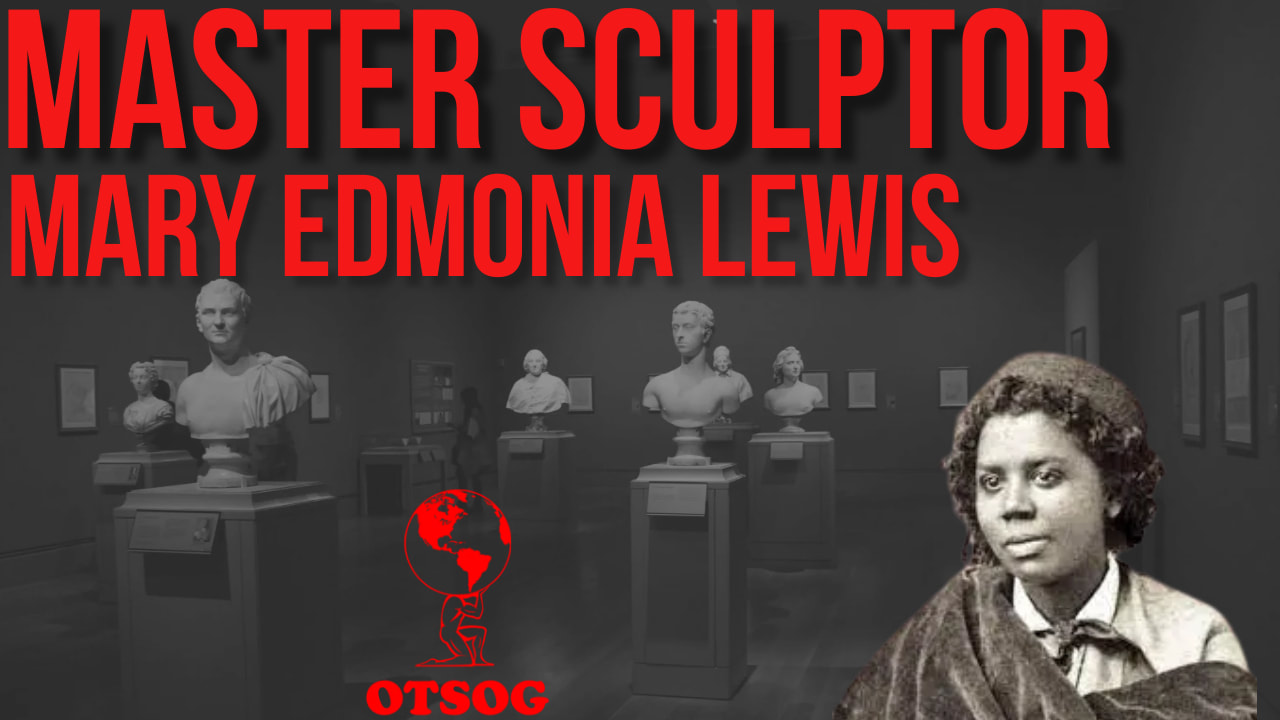

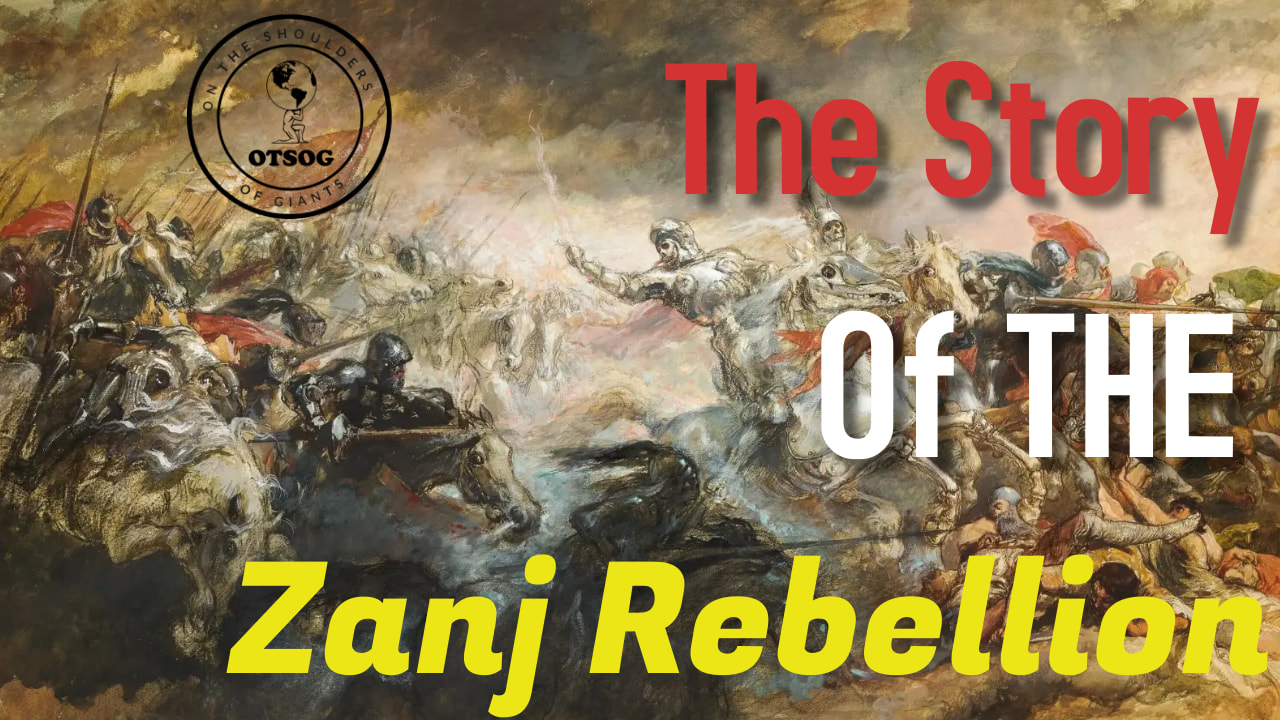
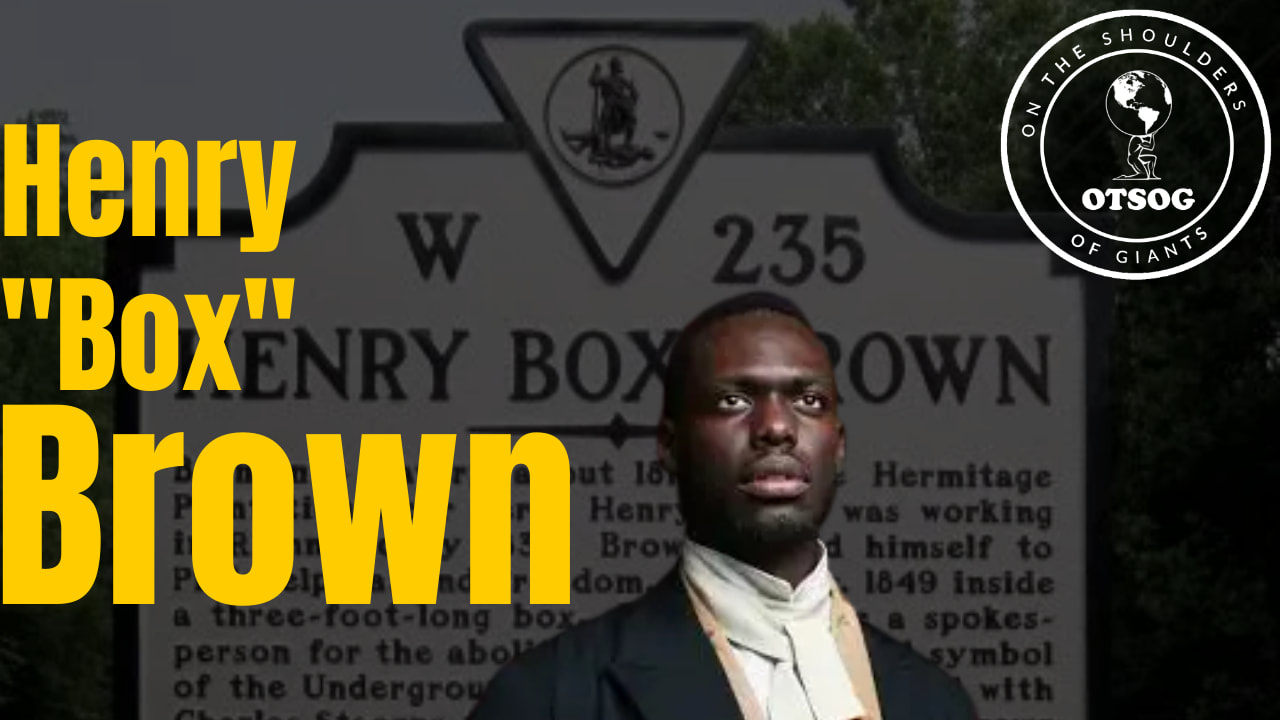
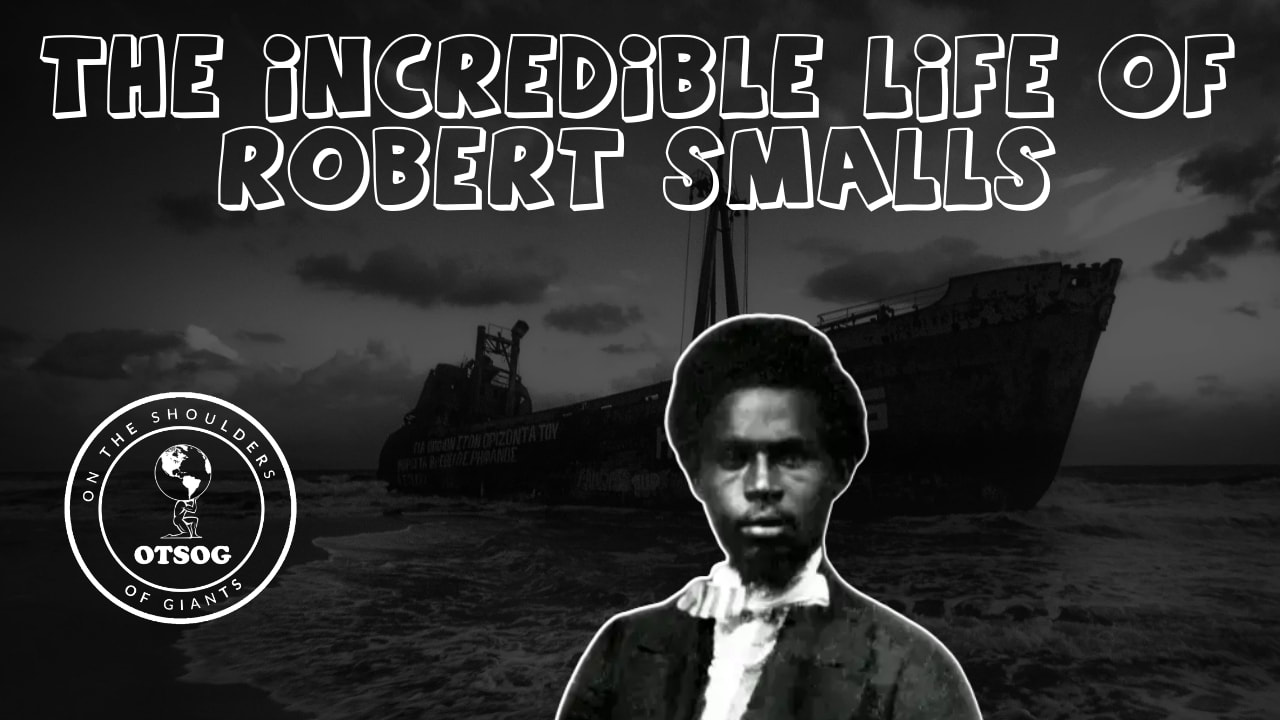
 RSS Feed
RSS Feed
